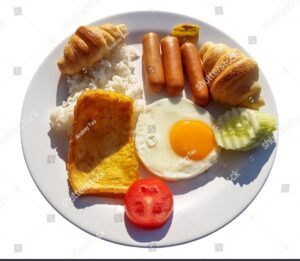Using diet chivda in diet: Is it possible to stay healthy?
Diet food is lower in calories and is a healthy alternative to traditional snacks like potato chips, hamburgers, and other fast food. Antioxidants, which are vital elements, are abundant in some diet foods. Diet chivda is a mixed snack eaten with hot beverages that is popular in India.
Crispy poha chivda with barik sev, diet chivda prepared with puffed rice flakes. Flavor enhancers, artificial color, hazardous preservatives, or chemical sweeteners are not used. Rice Flakes, Gram Flour, Sugar, and Salt are the main ingredients. Diet Chivda is a low-fat, nutrient-dense, and tasty dish. It goes well with hot tea or coffee. This is a pretty simple recipe; simply roast the peanuts and puffed rice, then combine them with some seasonings. This easy meal takes only 10 minutes to prepare and may be served as an evening snack to your family and friends. So, give this simple snack recipe a try in your home and let us know what you think in the comments below.
Recipe to make diet chivda
- Oil – 1 Tablespoon
- Asafoetida / Hing – A pinch
- Mustard seeds / Rai – 1/2 Teaspoon
- Curry leaves / Curry Patta – A handful
- Roasted Bengal gram / Roasted chana dal – 2 Tablespoons (optional)
- Cashew / Kaju – 12 to 15
- Dry coconut flakes – 8 to 10 pieces
- Turmeric powder / Haldi powder – 1/2 Teaspoon
- Black salt / Kala namak – 1/4 Teaspoon
- Salt – As per taste
- Roasted peanuts / Mungfali – 1 Cup
- Puffed rice / Murmure – 2 Cups
- Red chili powder / Lal mirchi powder – 1/2 Teaspoon (optional)

How to make it?
- Dry roast puffed rice for 3 to 4 minutes on low flame. Keep it aside.
- Heat oil in a pan. Add asafoetida, mustard seeds, curry leaves, roasted bengal gram, and cashew. Roast it for 1 to 2 minutes on medium flame.
- Then add dry coconut flakes. Mix well. Roast it for 2 to 3 minutes on medium flame.
- Now add turmeric powder, black salt, and salt. Mix well then add roasted peanut. Roast it for 1 to 2 minutes on medium flame.
- Now keep the flame low. Then add roasted puffed rice, red chilli powder, chaat masala, and powdered sugar. Mix well and roast it for 1 to 2 minutes on low flame.
- Once done, turn off the flame and take it out to a serving plate.
- ‘Diet Chivda | Weight Loss Chivda’ is ready to be served.
Benefits of diet chivda
There’s a reason poha is regarded as the ideal breakfast food and has garnered popularity not only in India but also around the world. For starters, it’s exceedingly simple to make, and even the most inexperienced cook can’t go wrong with any basic poha recipe. Furthermore, it is cooked with a variety of vegetables such as peas, potato, coriander, and even crispy peanuts. This increases the nutritional value and filling capacity of the dish. It’s also incredibly easy to find and packs a nutritional punch at a very low price!

Blood sugar levels are kept under control
Poha is thought to be a healthy supper for diabetics. Poha’s high fibre content supports a slow and constant release of sugar into the bloodstream, reducing the risk of blood sugar spikes.
A Beneficial Probiotic
Poha is also a good probiotic food, which may come as a surprise to some. This is due to the fact that the dish is created by parboiling paddy and then drying it for a few hours in the sun. The dried substance is then hammered flat to form poha. Because the completed food has been fermented, the microbial flora from the partially digested carbs and proteins has been preserved, which is beneficial to the gut.
Carbohydrates That Are Good For You
Poha has a carbohydrate content of 76.9% and a fat content of roughly 23%. As a result, it’s an excellent breakfast dish because these healthy carbs give energy for the body’s daily functions.
Simple to Consume
Poha is very easy to digest and light on the stomach. As a result, it can be eaten as a light morning meal or as an evening supper. Poha will never make you bloated and will keep you satisfied for longer.
Rich In Iron
Lactating or pregnant women are often advised to eat softened poha, as these women are at high risk of gestational anaemia. This is because the production process of poha requires the rice to pass through iron rollers. The flattened rice retains some of the iron from the process and are hence considered to be rich in iron. You may want to squeeze a bit of lemon juice in your bowl of breakfast poha to help your body absorb the iron better.
Final words
You can make your poha healthier and more nutritious by cooking it in olive oil or coconut oil and by adding more vegetables to it. You may even increase the satiety factor and make it protein-rich by throwing in some soya bean chunks. All in all, the Indian poha is quite a rockstar on the health front and must be included more often in your diet.


